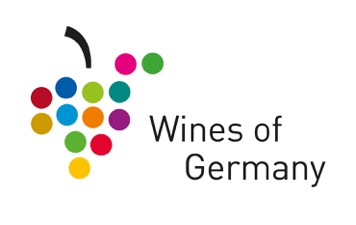De røde druene
Publisert 26. mars 2016 | Oppdatert 26. mars 2016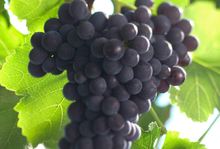
Spätburgunder
In Germany, the Spätburgunder is to red wine what the Riesling is to white wine: the cream of the crop.
In fact, Germany is the world's third largest producer of Pinot Noir. The German name for the grape is Spätburgunder - late (spät) ripening pinot (burgunder).
Sensitive to climate and soil, it needs warmth (but not intense heat) to thrive and does well in chalky soils. As the name implies, it ripens late (spät) and it was brought to Germany from Burgundy, where it has probably been cultivated since at least the 4th century (first documented, however, in the 14th century). Called Pinot Noir in France, this grape produces elegant, velvety wines with a distinctive bouquet reminiscent of bitter almonds or blackberries.
The traditional style of German Spätburgunder is lighter in color, body and tannic acidity than its counterparts from warmer climates. Many contemporary winemakers, however, are producing wines that are more international in style, ie fuller-bodied, deep red wines with higher tannin levels. Often the wines take on more depth and complexity (and a light vanilla tone) if they are aged in small (225-liter) oak casks. Just over 11,5% of Germany's vineyard area is devoted to Spätburgunder, primarily in the Ortenau and Kaiserstuhl districts of Baden; it accounts for over half the plantings in the Ahr.
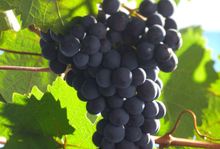
Dornfelder
Among new varieties, the Dornfelder shows great promise.
A prolific, relatively early ripener, it produces wine far deeper in color than is typical of German reds. In fact, it was initially bred (1955, in Württemberg) to serve as a blending wine to improve the color of pale reds. Today it is prized on its own as a fragrant, full-bodied, complex wine with a fairly tannic acidity.
The Dornfelder wines fermented and/or aged in oak casks (including Barriques), in particular, fetch high prices. From 124 ha in 1979, the vineyard area has expanded to 2,599 ha in 1997, moving Dornfelder into third place (after Spätburgunder and Portugieser) among red wine grapes grown in Germany. The Pfalz and Rheinhessen regions have the most plantings.
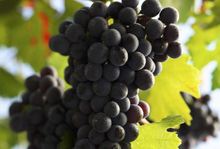
Portugieser
Portugieser is a very old variety that probably originated in the Danube Valley (not Portugal).
This prolific, early-ripening grape yields mild, light, easy-to-enjoy wines. A good portion of the annual crop is vinified as Weissherbst (rosé), yet even the red wines are fairly pale in color.
While the Pfalz by far has the largest number of plantings, there is a considerable amount of Portugieser grown in Rheinhessen and it is the second most important variety in the Ahr.
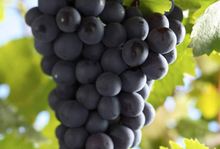
Trollinger
This very old red variety probably originated in, and derives its name from, Tirol, where it is known as Schiava (Italy) and Vernatsch (Austria).
A large yielder that ripens very late, it produces fragrant, fruity, light wines with a pronounced acidity.
Once found throughout German wine country (primarily as a table grape), today it is planted almost exclusively in Württemberg, where it is the quaffing wine of choice.
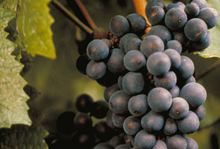
Schwarzriesling
Although the name literally means "black Riesling," this variety is not at all related to the Riesling, but rather, it is an earlier-ripening mutation of the Spätburgunder (Pinot Noir).
The wines are deep in color, but generally lack the complexity of Spätburgunder. It is frequently referred to by its synonym, Müllerrebe, and in France it is known as the Pinot Meunier. It is grown primarily in Württemberg.

Blauer Lemberger
Lemberger - An Evening of Mediterranean Warmth...
History
Officially classified under the name “Blauer Limberger”, this red grape variety also goes by the synonyms “Lemberger” and “Blaufränkisch”. The late-ripening Lemberger probably originated in vineyards on the lower stretches of the Danube River. The grape was documented in Austria in the second half of the 18th century and is cultivated there to this day (as Blaufränkisch) in Burgenland and near Vienna. In Hungary it is known as Kékfrankos. In the 19th century a “wine improvement society” advocated replacing high-yielding varieties with high-quality grapes (such as Lemberger) in the Kingdom of Württemberg. Indeed, Lemberger wines from Württemberg were the favorite of the first president of the Federal Repubic of Germany, Theodor Heuss, and it is said that the variety was equally as popular with Bismarck and Napoleon.
Viniculture/Taste
For wine connoisseurs, Lemberger is a “coat of many colors”.....ranging from light and fruity wines to those that are rich in extract and tannin (of Spätlese and Auslese ripeness). Usually, the wines are extremely dark in color. The bouquet can range from rather quiet to powerful, reminiscent of blackberries, sweet or sour cherries, plums, currants, gooseberries, elderberries, bananas and chocolate, as well as vegetal aromas, such as green beans or green bell peppers. Depending on vinification techniques, the wines have a fruity or a tannic accent and a long finish. Thanks to their acid, extract and tannin profile, even drier versions of Lemberger have good aging potential. Barrique-aging adds another dimension...reminiscent of Mediterranean warmth and charm. Ambitious vintners and cooperatives often blend Lemberger with Trollinger (depending on the percentage of the cuvée's components, the wine will be labeled with the predominant variety named first). Sparkling wine, or Sekt, made from the Lemberger grape is a real speciality.
Significance
During the past decades there has been a steady increase in the vineyard area planted with Lemberger. In the 80s it comprised some 400 to 500 ha (988 to 1,235 acres); in 1998, it surpassed 1,000 ha (ca. 2,500 acres); and today there are nearly 1,200 ha (ca. 3,000 acres). It is almost exclusively cultivated in Württemberg, where it accounts for about 10% of the total vineyard area (in Germany overall, 1%).
Viticulture
Lemberger thrives in a warm climate and wind-protected sites, not least because bud-burst is early and it ripens late. In very good sites, this Württemberg specialty brings forth excellent quality. It does well in various soil types, especially fertile, deep, loess-loam soils. Yields are average in size.

Domina
A promising, and relatively new, red wine grape, Domina is a crossing of Portugieser and Spätburgunder that was bred at the Institute for Vine Breeding in Siebeldingen in the Pfalz.
Like the Portugieser, it is a fairly prolific variety and does not require a particular type of soil or site.
Domina ripens later than Portugieser but earlier than Spätburgunder. In 2001, there were 228 hectares (563 acres) of Domina under vine - more than double the area a decade ago (89 ha/220 acres) - most of which is planted in Franken. Although they seldom show the finesse of Spätburgunder, Domina wines are pleasant, full-bodied and deep in color.
